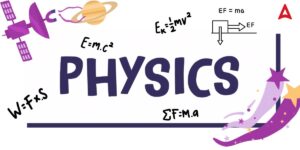Full form of ATP
Full form of ATP in Biology?– The organic component adenosine triphosphate (ATP) is a hydrotrope that provides energy to various functions in living cells, including muscular contraction, nerve impulse propagation, condensate dissolving, and chemical synthesis. ATP is the “molecular unit of currency” of intracellular energy transfer and is found in all known forms of life. It converts to either adenosine diphosphate or adenosine monophosphate when consumed in metabolic processes. Other systems recycle ATP, allowing the human body to recycle its own body weight in ATP every day. It also serves as a coenzyme and is a precursor to DNA and RNA.
ATP is a nucleoside triphosphate in biochemistry, which means it is made up of three components: a nitrogenous base, the sugar ribose, and the triphosphate.
ATP ka Full Form
कार्बनिक घटक एडेनोसिन ट्राइफॉस्फेट (एटीपी) एक हाइड्रोट्रोप है जो जीवित कोशिकाओं में विभिन्न कार्यों को ऊर्जा प्रदान करता है, जिसमें पेशी संकुचन, तंत्रिका आवेग प्रसार, घनीभूत विघटन और रासायनिक संश्लेषण शामिल हैं। एटीपी इंट्रासेल्युलर ऊर्जा हस्तांतरण की “मुद्रा की आणविक इकाई” है और जीवन के सभी ज्ञात रूपों में पाया जाता है। चयापचय प्रक्रियाओं में खपत होने पर यह या तो एडेनोसिन डाइफॉस्फेट या एडेनोसिन मोनोफॉस्फेट में परिवर्तित हो जाता है। अन्य प्रणालियाँ एटीपी का पुनर्चक्रण करती हैं, जिससे मानव शरीर हर दिन एटीपी में अपने शरीर के वजन को पुन: चक्रित कर सकता है। यह एक कोएंजाइम के रूप में भी कार्य करता है और डीएनए और आरएनए का अग्रदूत है।
एटीपी को जैव रसायन में न्यूक्लियोसाइड ट्राइफॉस्फेट के रूप में वर्गीकृत किया गया है, जिसका अर्थ है कि यह तीन घटकों से बना है: एक नाइट्रोजनस बेस, शुगर राइबोज और ट्राइफॉस्फेट।
Read About: Reason of Ozone Holes
ATP full form Structure
The 9-nitrogen atom of adenine is connected to the 1′ carbon atom of a sugar (ribose), which is then bonded to a triphosphate group at the sugar’s 5′ carbon atom. The adenine and sugar groups stay intact throughout their various metabolic processes, while the triphosphate is transformed to di- and monophosphate, yielding ADP and AMP, respectively. The three phosphoryl groups are known as alpha, beta, and gamma for the terminal phosphate.
Ionized ATP is predominantly ATP4 in neutral solution, with a tiny amount of ATP3.
Read About: Biosphere Reserve
ATP Full Form in Biology for Class 9
Both Karl Lohmann and Jendrassik of Harvard Medical School and Cyrus Fiske and Yellapragada Subba Rao of Harvard Medical School discovered ATP in 1929, vying against each other to find a phosphorus assay.
Fritz Albert Lipmann described it as an intermediate between energy-yielding and energy-demanding reactions in cells in 1941.
Alexander Todd was the first to synthesis it in the lab in 1948.
| CBSE Full Form | ICSE Full Form |
| CEO Full Form | SOP Full Form |
| AM PM Full Form | ACP Full Form |
FAQs on Full form of ATP in Biology
What is the function of ATP in the human body?
At the cellular level, adenosine triphosphate (ATP) is the energy source for use and storage.
Is it safe to consume ATP?
The US Food and Drug Administration has approved this kind of adenosine (FDA). When given by injection by qualified healthcare personnel, adenosine triphosphate (ATP) is POSSIBLY SAFE. When administered by skilled healthcare providers via intramuscular injection (IM), adenosine monophosphate (AMP) is POSSIBLY SAFE.
Is it possible to live without ATP?
Cells would die if they didn’t have ATP, their “energy currency.”
How much ATP do people utilise on a daily basis?
Every day, around 100 to 150 mol/L of ATP is required, implying that each ATP molecule is regenerated 1000 to 1500 times. The human body, in essence, expends its weight in ATP on a daily basis.
1 ATP equals how many calories?
Under typical conditions, hydrolysis of one mole of ATP to ADP releases 7.3 kcal/mole of energy.









 CUET Agriculture Syllabus 2026, Pattern,...
CUET Agriculture Syllabus 2026, Pattern,...
 CUET Maths Syllabus 2026 PDF Download - ...
CUET Maths Syllabus 2026 PDF Download - ...
 CUET Physics Syllabus 2026 for PCB and P...
CUET Physics Syllabus 2026 for PCB and P...














